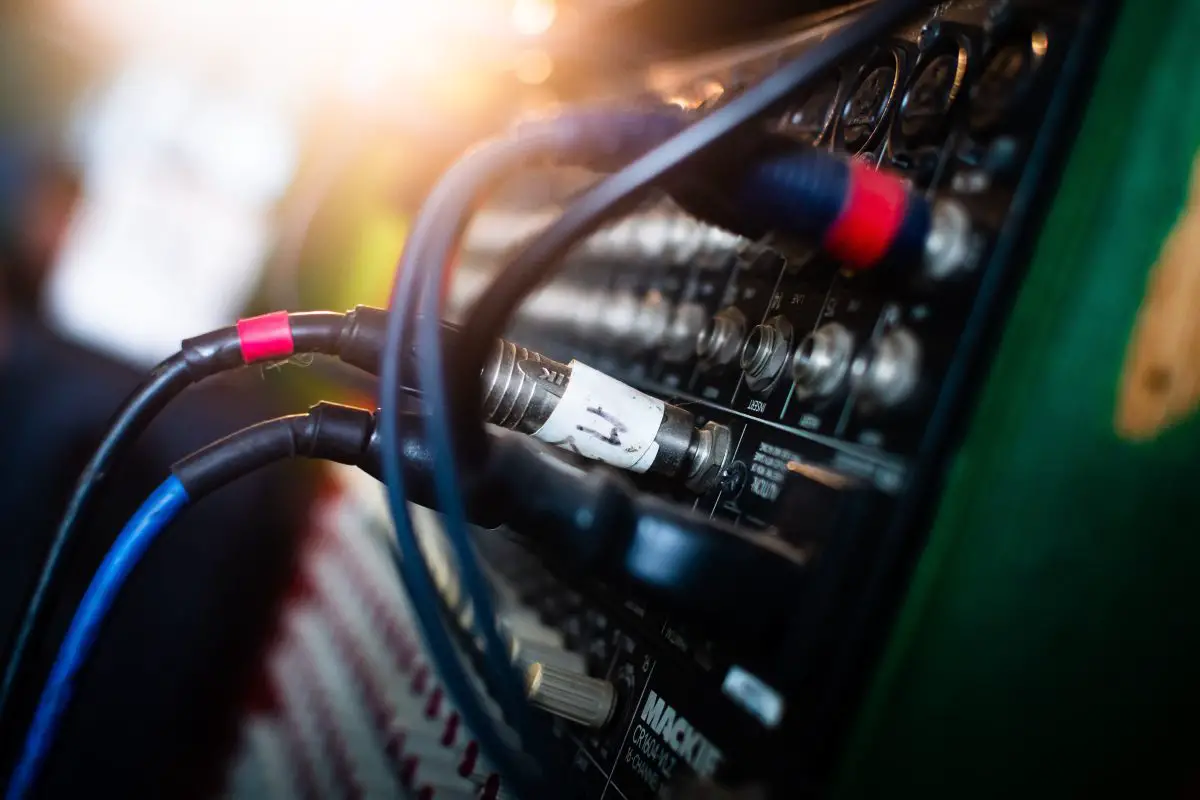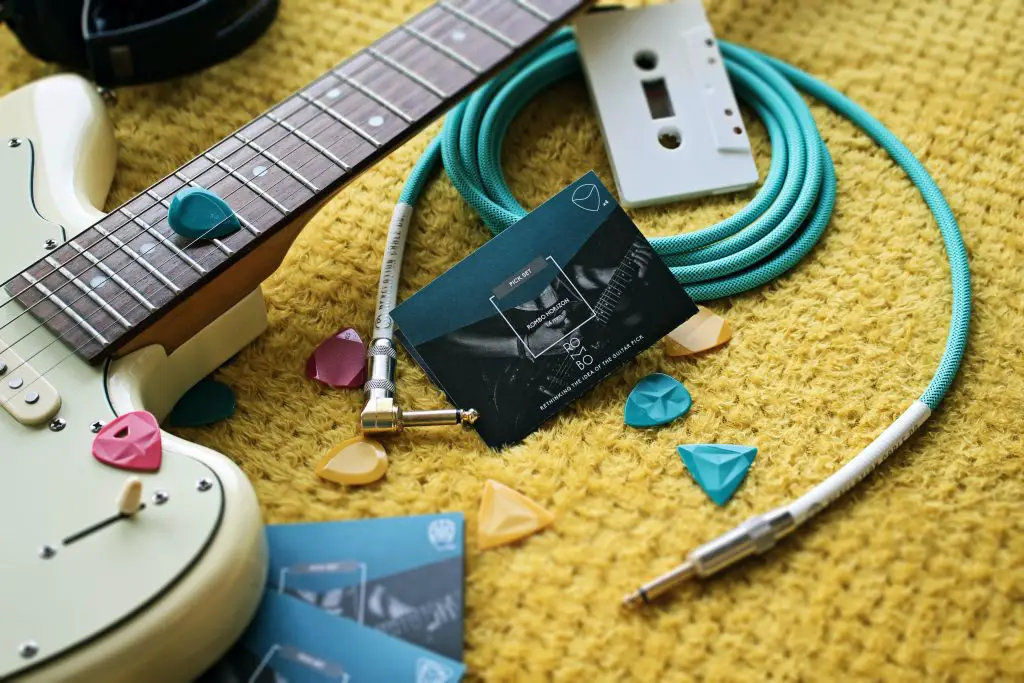If you’re a beginner music producer or musician, you might be wondering what an instrument cable is for. Well, you’re in the right place, my friend. In this blog post, we’ll dive into everything you need to know about these essential components of your musical setup. We’ll explore the different types of cables, how they affect sound quality, and what to look for when buying one.
Plus, we’ll share tips on proper maintenance, storage, and troubleshooting common issues. So, let’s get plugged in and amp up your knowledge – after all, knowing your cables is instrumental to your success!
What is an instrument cable? An instrument cable is a specialized cable designed to transmit audio signals from musical instruments to amplifiers, speakers, or recording devices.
What are instrument cables?
Instrument cables, also commonly referred to as guitar cables, are a type of audio cable used in music. They are primarily designed to transmit the audio signal from an instrument, such as an electric guitar or bass, to an amplifier or audio interface. These cables are essential for connecting musical instruments to audio equipment and are widely used by musicians, both in live performances and studio recordings.

Instrument cables are typically TS (tip-sleeve) cables, which means they consist of two conductors: a tip (signal) and a sleeve (ground). The tip carries the audio signal, while the sleeve provides the ground connection. This configuration allows the instrument to send its electrical signal through the cable, resulting in the reproduction of sound through speakers or headphones.
…instrument cables are unbalanced cables, meaning they are not designed to reject interference or noise as effectively as balanced cables.
The tip of the instrument cable is connected to the instrument’s output, such as the 1/4-inch output jack found on most electric guitars and basses. The other end of the cable is plugged into the input of an amplifier, audio interface, or any other audio equipment capable of processing the instrument’s signal.
It is important to note that instrument cables are unbalanced cables, meaning they are not designed to reject interference or noise as effectively as balanced cables. However, for short cable lengths typically used in instrument setups, the impact of noise is usually minimal.
AKAI Professional MPK Mini MK3

AKAI Professional MPK Mini MK3
How do instrument cables affect sound quality?
As a music producer, you know that sound quality is key, and yes, instrument cables play a significant role in it. High-quality cables can ensure optimal sound transmission by minimizing signal loss, interference, and noise.
For example, using a top-notch cable with proper shielding materials will help prevent unwanted hum or buzz, letting your guitar’s tone shine through. Trust me; your music will thank you for it.

Comparing common instrument cable connector types
The table below illustrates the differences between the three most common instrument cable connector types: TS, TRS, and XLR. Each connector has its own strengths and weaknesses, which are important to consider when choosing the right cable for your setup.
| Connector Type | Full Name | Application | Advantages | Disadvantages |
|---|---|---|---|---|
| TS | Tip Sleeve | Unbalanced audio | Simple, affordable | Prone to interference |
| TRS | Tip Ring Sleeve | Balanced audio, stereo | Versatile, less interference | Slightly more expensive |
| XLR | X Connector Latch | Balanced audio | Most secure, best shielding | Most expensive, bulkier |
What’s the difference between instrument and speaker cables?
There’s a common misconception that instrument and speaker cables are interchangeable, but they’re actually designed for different purposes. Instrument cables are meant to transmit audio signals from your instrument to amps, speakers, or recording devices, while speaker cables carry amplified signals from your amp to your speaker.
For instance, using a speaker cable for your guitar might result in a weaker signal and a duller tone. So, stick to the right cable for the job, and you’ll be rocking out with the best sound possible!
Advantages and disadvantages of instrument cables
Instrument cables play a crucial role in connecting musical instruments to amplifiers or audio equipment. These cables come with their own set of advantages and disadvantages, which are important to consider when setting up your musical gear.
Pros (Advantages)
Instrument cables offer several benefits that enhance the overall musical experience:
- Reliable Signal Transmission: High-quality instrument cables ensure reliable signal transmission between your instrument and the amplifier, resulting in clear and accurate sound reproduction.
- Durability: Well-built instrument cables are designed to withstand the rigors of live performances and frequent use. They are often made with durable materials such as braided shielding and robust connectors, ensuring longevity.
- Low Noise and Interference: Shielded instrument cables help minimize unwanted noise and interference, allowing you to achieve a cleaner and more pristine sound.
- Flexibility: Instrument cables come in various lengths, offering flexibility in positioning your equipment on stage or in the studio. Longer cables provide freedom of movement, while shorter ones are useful for more compact setups.
- Compatibility: Instrument cables are designed to work with a wide range of musical instruments, including guitars, basses, keyboards, and more. They typically feature standard connectors, ensuring compatibility with most audio devices.
Cons (Disadvantages)
While instrument cables have their advantages, there are a few drawbacks to consider:
- Signal Loss: Over longer cable lengths, there can be a small loss of signal strength, leading to a slight reduction in high-frequency response. This is more noticeable with lower-quality cables and can be mitigated by using shorter lengths or higher-quality cables.
- Physical Limitations: Instrument cables, especially longer ones, can be prone to tangling and getting in the way during performances or rehearsals. Care must be taken to manage cable routing to avoid tripping hazards or accidentally disconnecting equipment.
- Cost: Higher-quality instrument cables that offer better durability and sound performance can be more expensive than basic cables. While investing in quality cables is often worth it in the long run, it may require a higher upfront cost.
- Limited Lengths: Extremely long cable runs may introduce more significant signal loss, especially with lower-quality cables. In such cases, additional equipment, such as signal boosters or direct boxes, may be necessary to maintain signal integrity.
Understanding the advantages and disadvantages of instrument cables will help you make informed decisions when selecting the right cables for your musical setup. Consider your specific requirements, budget, and the type of instrument you are connecting to ensure optimal sound quality and reliability.
If you want even more tips and insights, watch this video called “INSTRUMENT CABLES vs SPEAKER CABLES: What’s the Difference?” from the Audio University YouTube channel.
Frequently asked questions (FAQ)
Do you still have questions about what an instrument cable is? Below are some of the most commonly asked questions.
Can I use a regular audio cable instead of an instrument cable?
While it might be tempting to use a regular audio cable, it’s not recommended. Instrument cables are specifically designed to handle the unique electrical properties of instruments and their output.
Using a regular audio cable may result in poor sound quality, signal loss, or even damage to your instrument or equipment.
How can I extend the lifespan of my instrument cables?
To extend the lifespan of your instrument cables, practice proper maintenance and storage. Avoid sharp bends, kinks, and tangles when winding up the cable, as these can damage the internal wiring. Use a cable tie or velcro strap to keep the cable neatly coiled.
Also, avoid stepping on the cable or placing heavy objects on it to prevent damage to the connectors and cable shielding.
What’s the optimal length for an instrument cable?
The optimal length for an instrument cable depends on your specific needs and setup. Generally, shorter cables are preferable as they minimize signal loss and potential interference. However, you should choose a cable length that provides enough flexibility.
Just remember the longer the cable, the greater the chance of signal loss and interference.
Conclusion
And there you have it, the ins and outs of instrument cables! It’s time to face the music and admits that these little connectors are more than just a side note in your musical journey. So, did you learn something new about instrument cables?
And did I cover everything you wanted to know? Let me know in the comments section below – I read and reply to every comment. If you found this article helpful, share it with a friend, and check out my full blog for more tips and tricks on all things music production. Thanks for reading, and here’s to making every connection count!
Key takeaways
This article covered what an instrument cable is. Here are some key takeaways:
- Instrument cables transmit audio signals from instruments to amplifiers, speakers, or recording devices.
- Different types of instrument cables include TS, TRS, and XLR connectors.
- Cable quality affects the sound transmission, with higher-quality cables ensuring optimal sound quality.
- Proper maintenance and storage are crucial to prolong the lifespan of instrument cables.
- Using the right cable for the intended purpose is essential, such as distinguishing between instrument and speaker cables.















